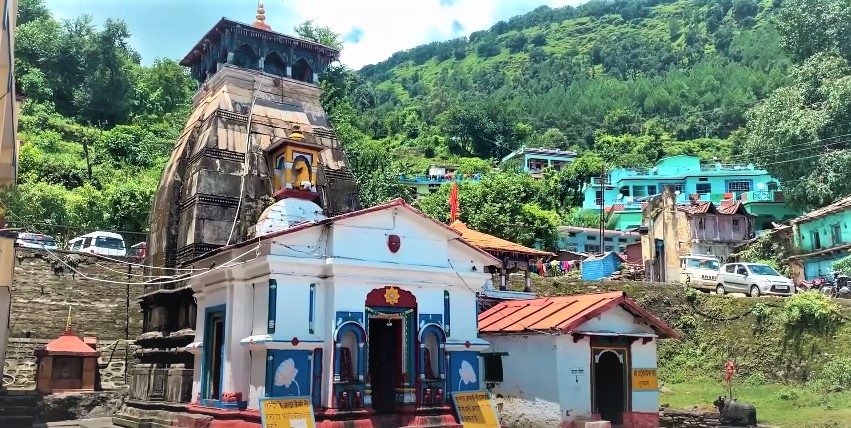There are places in India where spirituality doesn’t just live inside the walls of a temple—it spills into the air, the streets, the markets, and even the mountains. Uttarkashi Vishwanath Temple, tucked in the lap of Uttarakhand, is one of those places.
I first heard about this temple from a friend who had returned from the Char Dham Yatra. He told me, “Before you bow at Kedarnath, go to Vishwanath in Uttarkashi—it’s like the doorway to Lord Shiva’s blessings.” That line stuck with me, and when I finally made it there, I realized how true it was.
Let me take you on a journey to this sacred temple—its history, daily rhythms, rituals, and why visiting here feels like stepping into an ancient story that’s still alive.
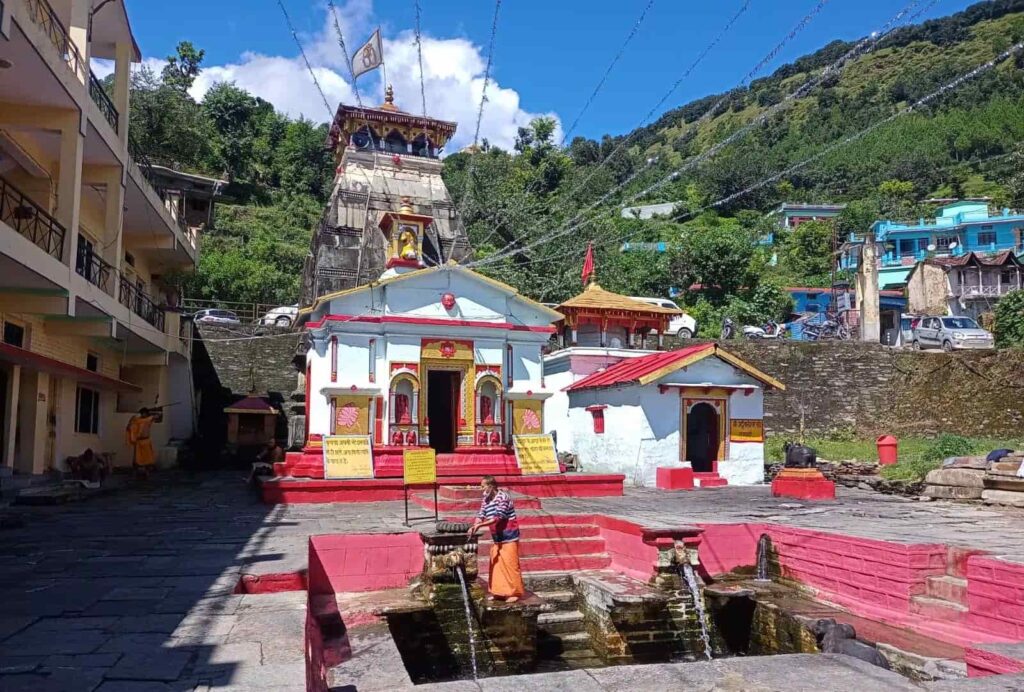
Where Exactly Is Uttarkashi Vishwanath Temple?
Uttarkashi, often called the “Kashi of the North”, is a town in the Uttarkashi district of Uttarakhand. It sits along the banks of the Bhagirathi River, one of the main tributaries of the Ganga. If you look at a map, you’ll see the town tucked into a valley, surrounded by dense forests and soaring Himalayan peaks.
The Vishwanath Temple is located in the heart of Uttarkashi town. Unlike temples buried deep in remote hills, it’s easily accessible by the main road that passes through the town. Yet, despite its central location, the temple feels secluded, as if protected by the mountains themselves.
How to Pinpoint the Temple
If you rely on GPS or Google Maps, searching for “Uttarkashi Vishwanath Temple” will take you directly to the temple’s entrance. But the true essence of finding it isn’t just following coordinates—it’s noticing the small details that signal you’ve arrived at a sacred spot:
- The flow of the Bhagirathi River nearby, shimmering in the morning sun.
- The sounds of temple bells, mingling with the rustle of leaves in the Himalayan breeze.
- Devotees carrying flowers and rudraksha beads, moving with reverence toward the temple courtyard.
From the main town road, you’ll spot the temple’s modest spire rising above the rooftops. The structure is made of stone, unpretentious but commanding in presence.
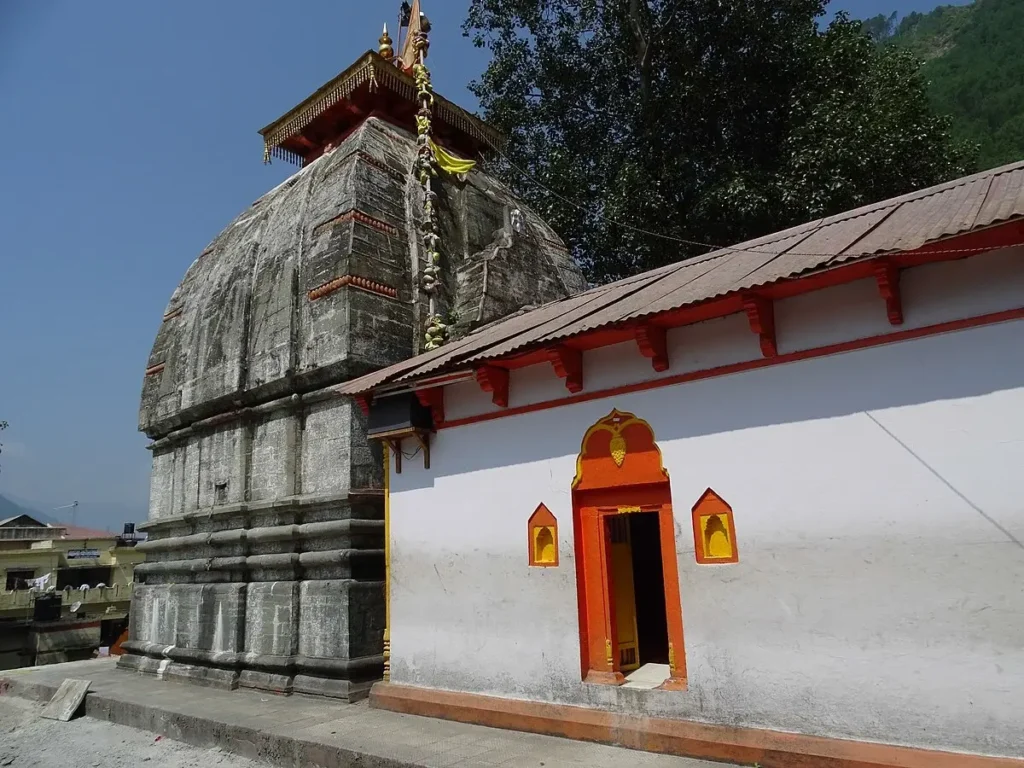
A Temple With a Timeless Aura
Unlike some shrines where the energy feels rushed or commercialized, Uttarkashi Vishwanath Temple has a slow, calm rhythm. The moment you step into the temple courtyard, the sound of temple bells blends with the river’s flow. Priests chant softly, pilgrims light lamps, and you feel an invisible stillness settle in your chest.
The temple itself has an ancient stone structure. Its spire rises quietly against the Himalayan sky, weathered by centuries of devotion. The sanctum houses a Shivling, simple and powerful, believed to have existed since the era of the Mahabharata.
Locals say, “Even if you cannot make it to Kashi in Varanasi, darshan here is equal to bowing at the Vishwanath Jyotirlinga.” That’s how sacred this temple is.
Legends and Stories That Live On
Every old temple in India carries stories, and Uttarkashi Vishwanath is no exception. Some of the tales I heard from locals made me look at the temple with new eyes:
- The Mahabharata Connection: It is believed that the Pandavas themselves visited this shrine before heading towards their final journey in the Himalayas. The Shivling here is said to have witnessed their prayers.
- The Kashi of the North: As per myth, Lord Shiva decided to make Uttarkashi his home in the north, mirroring his abode in Varanasi. That’s why the town itself is named Uttarkashi (Kashi of the North).
- Parvati’s Presence: Beside the temple stands a shrine of Goddess Parvati. The story goes that she guards the Shivling here, showering blessings of harmony and peace on devotees.
When you hear these tales while standing in the temple courtyard, surrounded by mountains, you realize these aren’t just myths—they’re living traditions, passed on through every pilgrim who comes here.
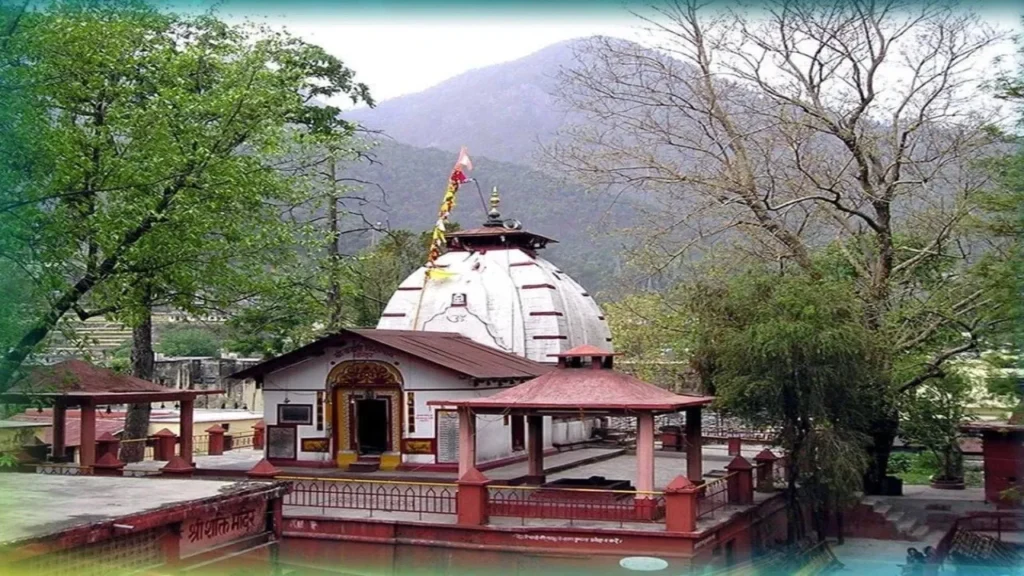
Daily Life at the Temple
One of my favorite things about visiting Uttarkashi Vishwanath Temple was watching its daily rhythm unfold. It’s not just about the big rituals or festivals—the temple breathes through its everyday moments.
- Morning Rituals (Mangala Aarti): The temple opens early, with priests performing the aarti at dawn. The sound of conch shells, bells, and mantras feels like an invitation for the day to begin with grace.
- Midday Puja: Devotees gather to offer flowers, milk, and water to the Shivling. Some sit quietly in meditation, while others recite mantras.
- Evening Aarti (Sandhya Aarti): As the sun sets over the Himalayas, the temple glows with diyas. This is the most magical time to visit—the chants, the flames, and the cool mountain air create a surreal atmosphere.
In between rituals, life goes on quietly. Local shopkeepers outside sell flowers, rudraksha beads, and prasad. Pilgrims share stories, children run around, and sadhus rest in corners with serene faces.
Festivals That Bring the Temple Alive
While the temple is special throughout the year, during festivals it truly comes alive with colors, sounds, and crowds.
- Shivratri: The biggest celebration here. Thousands gather to witness grand pujas, night-long chants, and a special procession of Lord Shiva. The energy is electric—you feel part of something timeless.
- Sawan (Monsoon Month): Devotees walk barefoot to bring water from the Bhagirathi to offer at the temple. The atmosphere is filled with chants of “Har Har Mahadev.”
- Navratri: While Shiva takes the center stage, Goddess Parvati’s shrine is decorated beautifully. Women and families gather for special prayers.
If you can, time your visit during these festivals. It’s not just about watching rituals—it’s about experiencing a town that beats in rhythm with its temple.
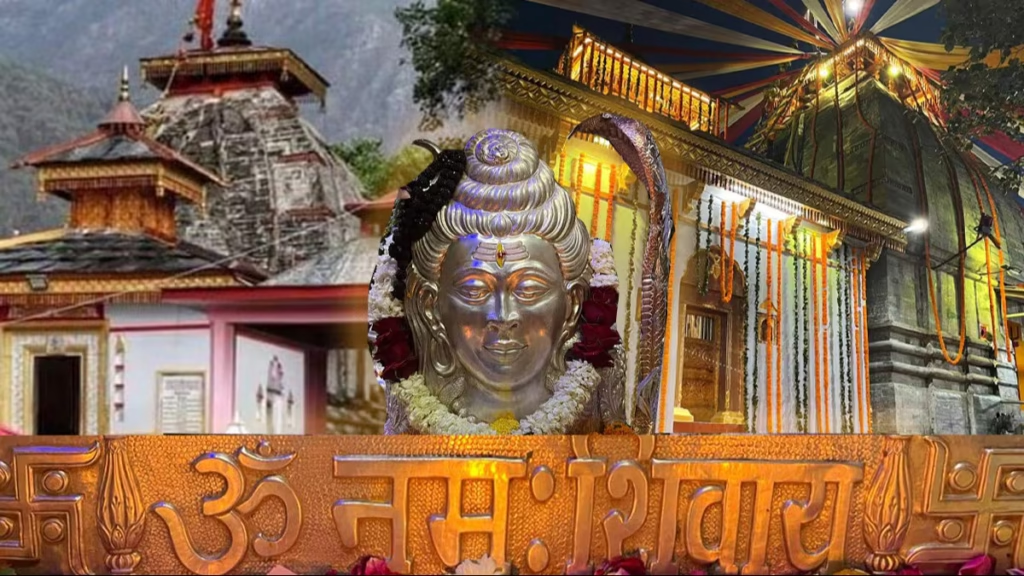
How to Reach Uttarkashi Vishwanath Temple
Getting to Uttarkashi is part of the adventure. The town is well-connected but expect winding mountain roads.
By Road
Road travel is the most common and flexible way to reach Uttarkashi. Here’s how you can plan it:
From Dehradun
- Distance: Approx. 150 km
- Travel Time: 5–6 hours
- Route: Dehradun → Rishikesh → Devprayag → Chamba → Uttarkashi
- Highlights: The route passes through the confluence of Alaknanda and Bhagirathi at Devprayag, scenic river valleys, and small mountain towns.
From Haridwar
- Distance: Around 200 km
- Travel Time: 6–7 hours
- Route: Haridwar → Rishikesh → Devprayag → Chamba → Uttarkashi
- Tip: Combining a spiritual trip to Haridwar and Rishikesh with Uttarkashi makes a meaningful journey through the holy Ganga circuit.
Local Transport Options
- Buses: Uttarakhand State Transport Corporation (UTC) operates regular buses from Dehradun, Rishikesh, and Haridwar. Options include ordinary, deluxe, and semi-sleeper buses.
- Private Taxis: Hiring a private taxi is convenient, especially for groups or families. You can stop along scenic spots, rivers, and villages along the way.
- Self-Drive: If you enjoy driving through mountains, the road conditions are generally good until Uttarkashi, though careful driving is needed in winding sections.
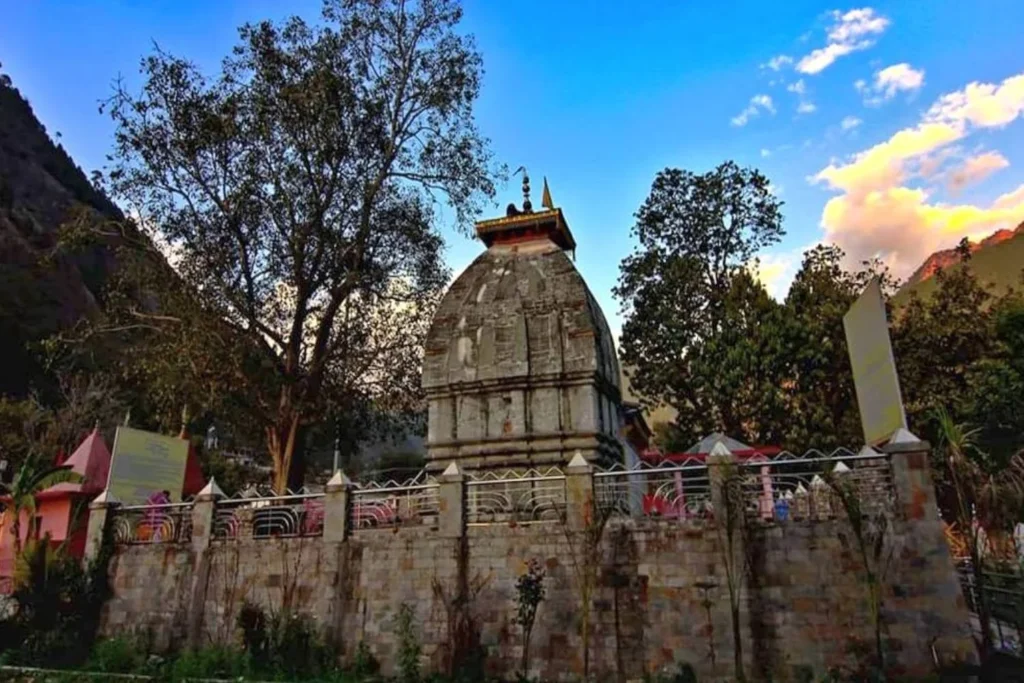
By Train
For travelers coming from distant cities, train travel to Uttarkashi involves reaching the nearest railway stations:
- Nearest Station: Rishikesh (approx. 150 km)
- Connecting Cities: Delhi, Mumbai, Kolkata, and major northern cities have trains to Rishikesh.
- From Rishikesh to Uttarkashi: You can hire a taxi, take a bus, or rent a cab for the 5–6 hour journey through scenic Himalayan valleys.
Pro Tip: Train travel is comfortable and scenic. Overnight trains to Haridwar or Rishikesh can save a day and allow you to start your road journey fresh in the morning.
By Air
The closest airport to Uttarkashi is Jolly Grant Airport, Dehradun:
- Distance to Uttarkashi: Approx. 150 km
- Flight Connections: Daily flights from Delhi, Mumbai, and other major Indian cities.
- From Airport to Uttarkashi: Taxis and private cabs are available. Road travel takes around 5–6 hours, passing Rishikesh and Devprayag.
Travel Tip: Arrive early in the morning if you plan to reach Uttarkashi the same day, as mountain roads can slow travel due to weather or traffic.
Scenic Stops on the Way
The journey to Uttarkashi Vishwanath Temple is part of the Himalayan experience. Don’t rush—stop at:
- Devprayag: Witness the confluence of Alaknanda and Bhagirathi, a sacred spot for pilgrims.
- Chamba: A small town offering riverside views, tea stalls, and local snacks.
- Tehri Lake (Optional): If taking a slight detour, the lake is a beautiful spot for photography.
These stops make the journey comfortable and provide glimpses of local culture and natural beauty.
The Himalayan Setting
What makes the temple even more special is its location. The Bhagirathi River flows gracefully nearby, and the Himalayan peaks form a protective circle around the town.
In the mornings, mist rolls down the mountains and wraps the temple in a dreamy blanket. By afternoon, the skies open up in a bright blue canvas. In the evenings, the cool breeze carries the sound of temple bells across the valley.
Uttarkashi isn’t just about the temple—it’s about being present in a Himalayan town that feels untouched by time.
Nearby Attractions
Here’s a detailed guide to nearby attractions you shouldn’t miss when visiting Uttarkashi Vishwanath Temple.
Bhagirathi River Ghats
Just a stone’s throw from the temple lie the Ghats of the Bhagirathi River, where locals and pilgrims gather daily. These steps leading to the holy waters offer a serene spot for meditation and ritual baths.
- Spiritual Experience: Devotees come here to perform pujas, take dips in the river, and offer flowers. The water is believed to cleanse not only the body but also the mind.
- Scenic Views: Early morning is magical, with mist rising from the river and sunlight glinting on the flowing water. Sitting on the ghats with a cup of tea, you can watch the mountains reflect on the Bhagirathi.
- Photography Tip: Sunrise captures the river and temple in perfect harmony. Evening light also works beautifully for reflective shots.
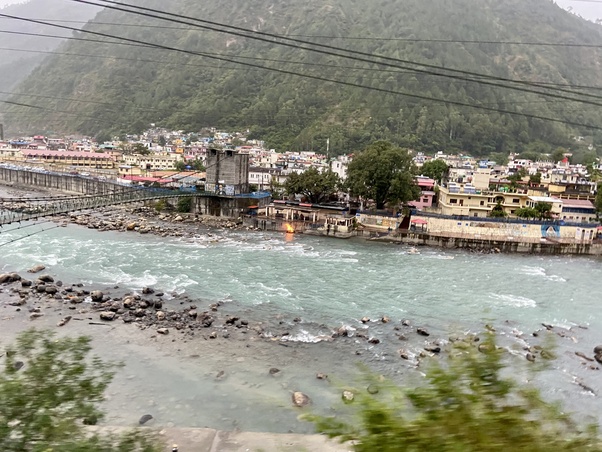
Shakti Temple
Located close to Vishwanath Temple, the Shakti Temple is dedicated to Goddess Durga. While Vishwanath Temple represents Shiva, the Shakti Temple balances the spiritual energies of the town.
- Architecture: Though smaller than Vishwanath, it carries its own charm with a traditional stone spire and intricate carvings.
- Festivals: Navratri is celebrated here with grandeur. Devotees flock to participate in evening aartis and cultural performances.
- Why Visit: Even if you’re not there during a festival, the temple’s peaceful courtyard offers a quiet retreat for meditation and reflection.

Nehru Institute of Mountaineering
For travelers who love a mix of spirituality and adventure, the Nehru Institute of Mountaineering (NIM) is a fascinating stop.
- Location: About 5 km from the temple, nestled amid pine forests.
- What to Expect: The institute offers mountaineering courses and trekking expeditions. Even if you’re not enrolling, you can walk around the campus and witness trainees learning rock climbing, rope techniques, and survival skills.
- Traveler’s Tip: Carry a camera—seeing trainees practice on Himalayan terrain makes for compelling photos.
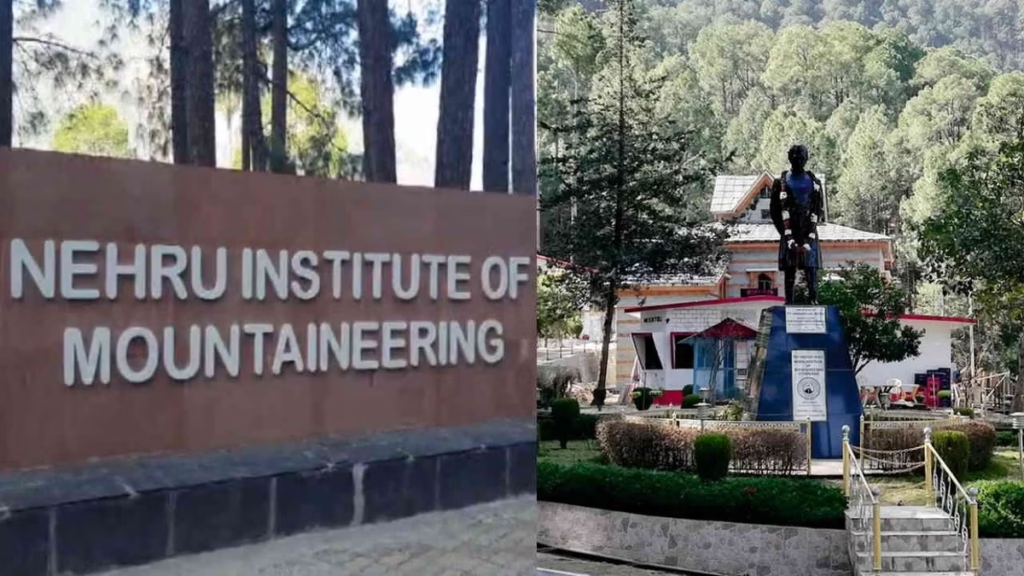
Maneri Dam
About 7 km from Uttarkashi Vishwanath Temple is the Maneri Dam, situated on the Bhagirathi River.
- Scenic Spot: Surrounded by hills and forests, the dam is perfect for evening strolls.
- Photography: The reflection of the mountains and river on the water creates postcard-perfect images.
- Relaxation: Many travelers stop here to enjoy a quiet picnic by the river before heading back to the town.
Nestled in the heart of the Garhwal Himalayas, Uttarkashi is not just a spiritual hub with the Vishwanath Temple—it’s also a gateway to some of the most stunning trekking routes in India. For travelers who love combining spiritual exploration with adventure, Uttarkashi offers a perfect base. From gentle day hikes to challenging multi-day treks, the region’s trails promise breathtaking scenery, river valleys, and glimpses of remote Himalayan life.
If you’re a trekking enthusiast or someone who wants to experience Uttarkashi beyond temples, this guide will help you discover trekking routes near Uttarkashi, complete with difficulty levels, best seasons, and travel tips.
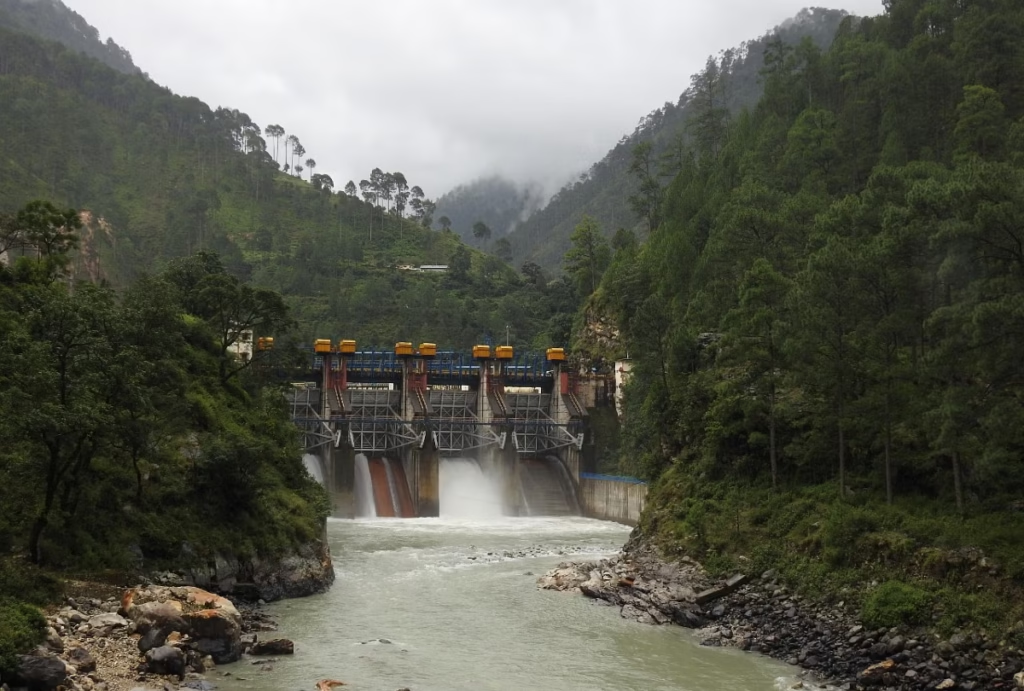
Why Uttarkashi is a Trekker’s Paradise
Uttarkashi lies along the Bhagirathi River, surrounded by dense pine forests, snow-capped peaks, and hidden Himalayan villages. Its altitude ranges from 1,158 meters in town to over 3,000 meters in the trekking routes, providing a gradual acclimatization for trekkers heading toward Gangotri or Yamunotri.
The region’s trails combine:
- Scenic landscapes: Alpine meadows, gushing rivers, and panoramic Himalayan views.
- Spiritual stops: Temples and shrines along the way add a unique cultural layer to your trekking experience.
- Diverse difficulty levels: Suitable for beginners to experienced trekkers.
Popular Day Treks Near Uttarkashi
If you don’t have days to spare for multi-day expeditions, day treks around Uttarkashi are perfect for a quick Himalayan fix:
1. Kedar Kantha Base Camp Trek (Partial)
- Distance from Uttarkashi: Approx. 40 km to base camp approach.
- Difficulty: Moderate.
- Highlights: Pine forests, streams, and snowfields in winter. You can experience part of this trail without committing to the full trek, ideal for acclimatization.
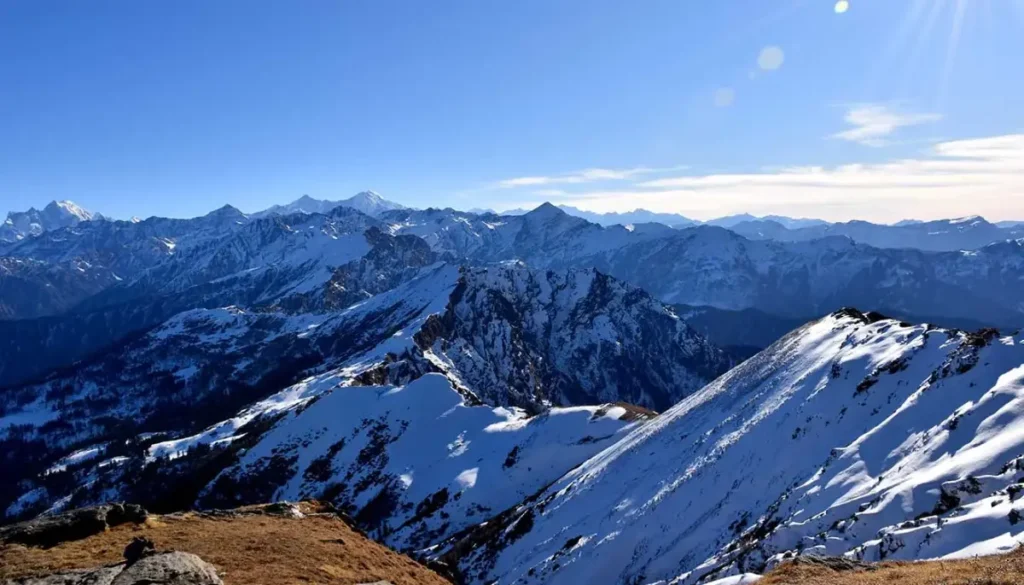
2. Day Trek to Dodital Lake
- Distance: Around 28 km from Uttarkashi town, but day trips usually cover nearby trails.
- Difficulty: Moderate to challenging.
- Highlights: The trek passes lush forests and meadows, with the stunning Dodital Lake at the end. The lake reflects the surrounding peaks beautifully.
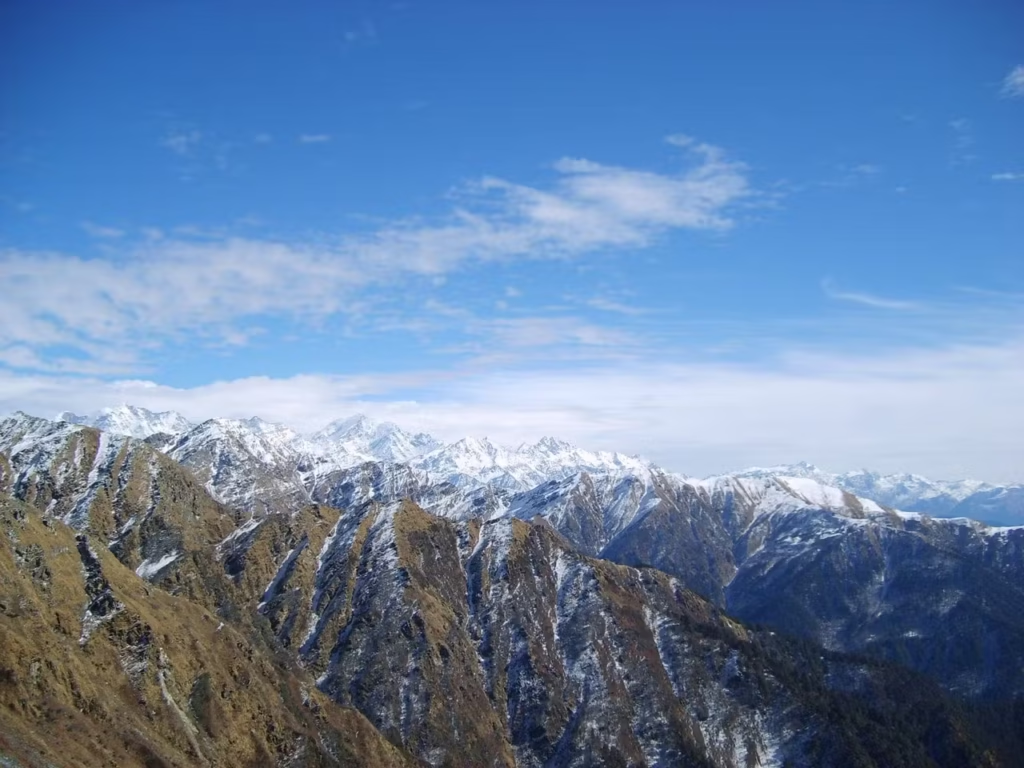
3. Day Hikes to Nearby Himalayan Villages
- Villages like: Barkot and Hanuman Chatti.
- Difficulty: Easy to moderate.
- Highlights: Experience local culture, Himalayan lifestyle, and tea shops along the trails. These short treks are perfect for casual hikers and photographers.
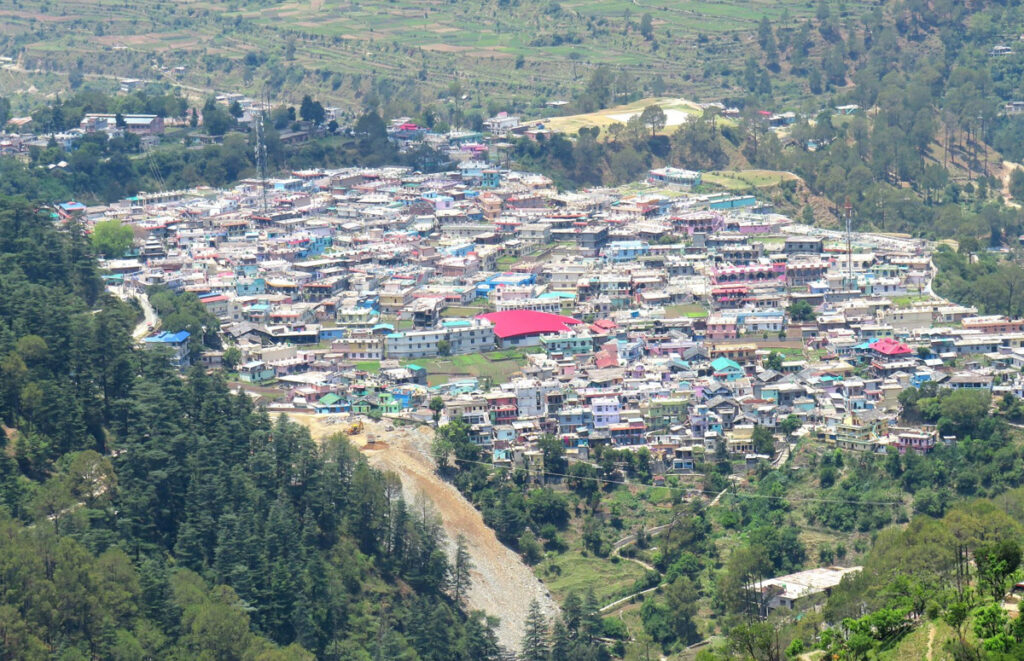
Multi-Day Treks From Uttarkashi
For serious trekkers, multi-day expeditions offer adventure, isolation, and incredible scenery:
1. Gangotri Trek
- Distance: 100 km from Uttarkashi to Gangotri base.
- Difficulty: Moderate to difficult.
- Highlights: Dense forests, river crossings, and views of snow-capped peaks. Gangotri Glacier, the source of the Ganga, is the main attraction.
2. Khatling Glacier Trek
- Distance: Approx. 45 km from Uttarkashi via base camps.
- Difficulty: Difficult.
- Highlights: Challenging terrain, high-altitude experience, and pristine glaciers. Ideal for adventure seekers looking for offbeat paths.
3. Auden’s Col and Har Ki Dun (Extended Treks)
- Distance: Accessible from Uttarkashi via connecting trails.
- Difficulty: Moderate to difficult, requires camping.
- Highlights: Har Ki Dun valley offers alpine meadows and tribal villages. Auden’s Col is a high-altitude pass with breathtaking panoramic views.
Lesser-Known Trekking Trails
For travelers who prefer solitude and offbeat paths:
- Dayara Bugyal Approach: Vast alpine meadows with colorful flora during spring and summer.
- Barkot to Netwar Village Trail: Offers a mix of forest paths, small streams, and local culture.
- Maneri Dam to Surrounding Hills: Short, scenic hikes suitable for beginners and photography enthusiasts.
Local Flavor and Stays
Travel isn’t just about temples—it’s also about food and where you rest.
- Food: Outside the temple, you’ll find stalls selling puri-sabzi, pakoras, jalebi, and chai. The simplicity of the food adds to the experience. Don’t miss the hot jalebis after your darshan—it’s almost a tradition.
- Stay: Uttarkashi offers everything from budget lodges to comfortable guesthouses. Many are located by the river, giving you a perfect spot to wake up with mountain views.
Why You Should Visit
For me, the Uttarkashi Vishwanath Temple wasn’t just another Shiva shrine—it felt like a spiritual checkpoint. It’s a place where myth and history blend with everyday devotion, where the mighty Himalayas stand as silent witnesses to centuries of faith.
If you’re on a Char Dham Yatra, this temple is an essential stop. But even if you’re not, Uttarkashi deserves your time. Whether you come here for faith, history, or just the serenity of a Himalayan town, the temple will leave you with something deeply personal.
FAQs
Q1. Where is Kashi Vishwanath Temple located in Uttarkashi?
It is situated in the heart of Uttarkashi town, on the banks of the Bhagirathi River.
Q2. Which deity is worshipped here?
The temple is dedicated to Lord Shiva, worshipped as Vishwanath, the ruler of the universe.
Q3. How old is the Kashi Vishwanath Temple in Uttarkashi?
It is believed to date back to the 8th century, originally built by King Guh of Uttarkashi.
Q4. What is the significance of this temple?
It is one of the sacred Shiva temples on the Char Dham route and holds immense spiritual value.
Q5. What are the temple timings?
The temple generally opens early morning for darshan and closes in the evening after aarti.
Q6. Is there any special festival celebrated here?
Maha Shivaratri is celebrated with grand devotion, along with Shravan month rituals.
Q7. How can one reach Kashi Vishwanath Temple, Uttarkashi?
It is easily accessible by road from Rishikesh and Dehradun; the nearest railway station is Rishikesh.
Q8. Is there an entry fee for visiting the temple?
No, the temple is open to all devotees free of charge.
Q9. Are there accommodations nearby?
Yes, Uttarkashi town has hotels, dharamshalas, and guesthouses for pilgrims.
Q10. Why is it compared to Kashi Vishwanath in Varanasi?
It is believed that Lord Shiva resides here as Vishwanath, just like in the famous temple at Varanasi, giving it equal sanctity.

